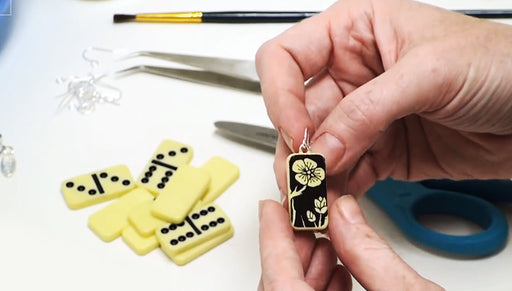How to Use Crystal Clay
The brand name for the crystals shown in this video is no longer available. High quality Austrian crystals are now available under the PRESTIGE™ Crystal Components line.
The brand name for the crystals shown in this video is no longer available. High quality Austrian crystals are now available under the PRESTIGE™ Crystal Components line.

|
SKU: XTL-4004 $17.99 |

|
The Beadsmith Magical Tray For Rhinestones - Flips Flatback Rhinestones Like Magic SKU: XTL-9014 $8.59 |

|
The Beadsmith Aluminum Triangle Bead Sorting Trays Use to Sort/Scoop & Weigh (6 Pieces) SKU: XTL-9012 $3.89 |


This video explores different finishing techniques for metal stamping blanks which have been etched and embossed using the Vintaj Big Kick machine ...
View full details

In this video, learn about how to operate the Vintaj BIGkick machine by Sizzix to emboss and etch metal stamping blanks. Learn how to properly use ...
View full details

Learn how to make a beautiful pair of earrings using small dominoes, image transfers and Aanraku bails. These step-by-step instructions show you ho...
View full detailsI bought this stuff twice and both times it was hard as a rock from Nunn design. THey are selling unuseable ROCKS. I cleaned out my closet and found the crap, unable to use. It was that way immediately- I thought I would send it back but then I got breast cancer and was kind of busy. SUCH A DISAPPOINTMENT. DO NOT BUY.
Join the Beadaholique newsletter list for new product announcements, exclusive coupon codes, sale alerts and more.
Copyright © 2025 Beadaholique.
